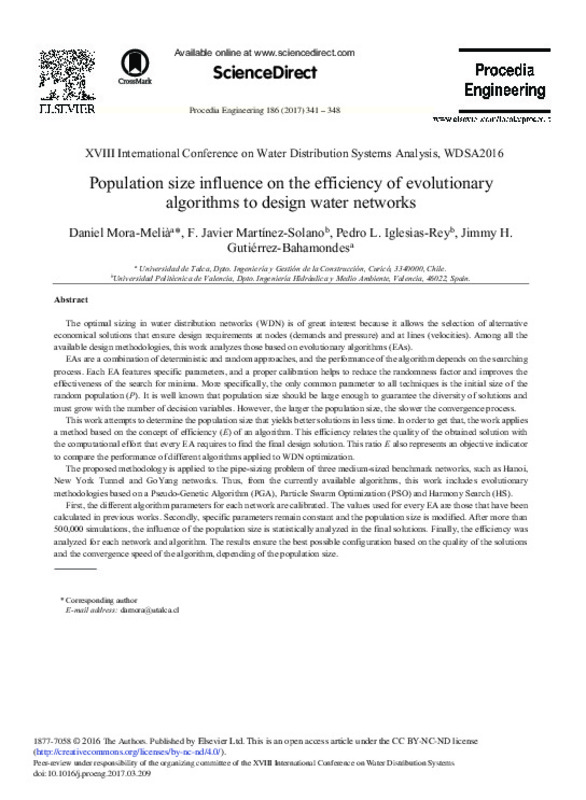JavaScript is disabled for your browser. Some features of this site may not work without it.
Buscar en RiuNet
Listar
Mi cuenta
Estadísticas
Ayuda RiuNet
Admin. UPV
Population size influence on the efficiency of evolutionary algorithms to design water networks
Mostrar el registro completo del ítem
Mora-Melia, D.; Martínez-Solano, FJ.; Iglesias Rey, PL.; Gutiérrez-Bahamondes, JH. (2017). Population size influence on the efficiency of evolutionary algorithms to design water networks. Procedia Engineering. 186:341-348. doi:10.1016/j.proeng.2017.03.209
Por favor, use este identificador para citar o enlazar este ítem: http://hdl.handle.net/10251/108644
Ficheros en el ítem
Metadatos del ítem
| Título: | Population size influence on the efficiency of evolutionary algorithms to design water networks | |
| Autor: | Mora-Melia, Daniel Gutiérrez-Bahamondes, Jimmy H. | |
| Entidad UPV: |
|
|
| Fecha difusión: |
|
|
| Resumen: |
[EN] The optimal sizing in water distribution networks (WDN) is of great interest because it allows the selection of alternative
economical solutions that ensure design requirements at nodes (demands and pressure) and at ...[+]
|
|
| Palabras clave: |
|
|
| Derechos de uso: | Reconocimiento - No comercial - Sin obra derivada (by-nc-nd) | |
| Fuente: |
|
|
| DOI: |
|
|
| Editorial: |
|
|
| Versión del editor: | https://doi.org/10.1016/j.proeng.2017.03.209 | |
| Tipo: |
|









